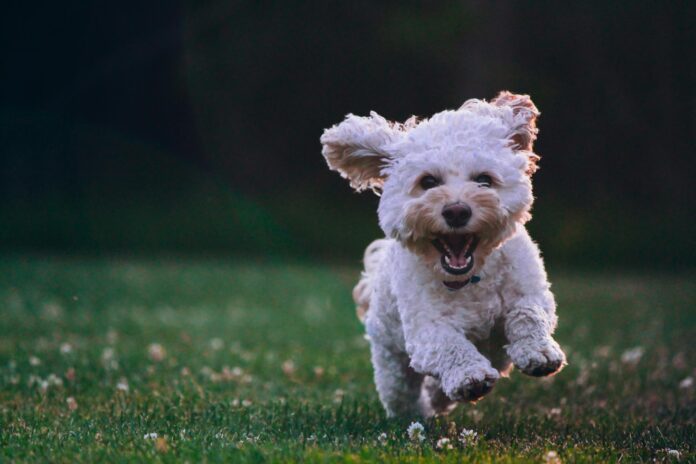Last Updated on February 22, 2024 by Dogs Vets
Training a puppy is both a delightful and challenging task that requires patience, consistency, and a touch of creativity.
By understanding the psychology of puppies and leveraging effective training techniques, you can establish a healthy, happy relationship with your furry friend.
This guide unveils the secrets to puppy training success to help both you and your puppy in this exciting journey.
Understanding Your Puppy’s World
Puppies experience the world differently than adult dogs or humans. Their early months are critical for socialization and learning. Understanding their perspective helps in tailoring training sessions that are both effective and enjoyable.
A puppy’s attention span is short, so keeping training sessions brief yet frequent will yield the best results.
Choosing a puppy that fits your lifestyle is an essential step in creating a harmonious living environment. Breeds such as the dark Golden Retriever are known for their adaptability and friendly nature, making them great companions for families and individuals alike.
Understanding the characteristics of different breeds can help ensure that your puppy’s energy levels and temperament are a good match for your home.
Consistency is Crucial
Consistency in commands, tone of voice, and rewards is essential for effective puppy training. Puppies thrive on routine and predictability. Using the same words for commands and maintaining a consistent training schedule helps your puppy understand and learn what is expected.
Socialization: Building Confidence and Adaptability
Socialization is the process of exposing your puppy to a variety of people, places, and situations to promote confidence and prevent fearfulness.
The prime socialization period for puppies is between 3 and 14 weeks of age. Proper socialization involves gradual, positive exposure to new experiences, ensuring your puppy grows into a well-adjusted adult dog.
Positive Reinforcement: The Key to Success
Positive reinforcement is a powerful technique in puppy training. It involves rewarding desirable behaviors, making them more likely to be repeated. Rewards can include treats, praise, or playtime.
This method builds a bond of trust and encourages your puppy to view training as a fun, rewarding experience.
The Role of Patience and Love
Patience and love are perhaps the most crucial elements in training your puppy. Mistakes and accidents are part of the learning process.
Approaching training with patience, understanding, and lots of love fosters a supportive environment where your puppy can thrive. Remember, the goal is to build a lifelong bond with your puppy through mutual trust and respect.
Addressing Biting and Nipping
Biting and nipping are natural behaviors for puppies, often stemming from teething discomfort or the desire to play. Addressing this behavior early is crucial. Redirecting your puppy to suitable toys or providing them with chew toys can mitigate inappropriate biting.
Consistently discouraging biting on hands or clothing teaches your puppy acceptable ways to interact.
Engaging Your Puppy with Interactive Play
Interactive play is not only fun for your puppy but also serves as a dynamic learning tool. Games like fetch, hide and seek, and puzzle toys stimulate your puppy’s mind, teach valuable problem-solving skills, and strengthen the bond between you.
Interactive play introduces commands and behaviors in a lively, memorable way, making learning a joyful experience for both of you.
Crate Training: Creating a Safe Haven
Crate training is an invaluable tool in puppy training, offering benefits for both safety and housebreaking. A crate provides your puppy with a personal space, where they can feel secure and comfortable.
It is important to introduce crate training positively, ensuring it is associated with positive experiences. Never use the crate as punishment.
Dealing with Separation Anxiety
Separation anxiety can be a common issue in puppies, manifesting through destructive behavior or excessive barking when left alone.
It is important to address this early by building your puppy’s confidence in solitude. Gradual, positive experiences of being alone, paired with comforting items like a favorite toy or blanket, can help ease the anxiety, fostering a sense of independence.
Nutrition and Training
Proper nutrition plays a vital role in your puppy’s training and overall well-being. A nutritious diet supports physical development, cognitive function, and energy levels, all crucial for effective learning.
Consult with your vet to choose the best diet plan for your puppy, and consider using healthy treats as rewards during training sessions. With the right nutrition, your puppy will be more receptive to learning and engaging in training activities.
Conclusion
Training your puppy is a journey filled with challenges and triumphs. By employing these effective training techniques, you are setting the foundation for a harmonious relationship with your puppy.
Each puppy is unique, so be observant and flexible, adapting your training approach to fit your puppy’s individual personality and needs. Above all, enjoy the process of learning and growing together.
Facts Check
We hope you enjoyed this article… What are your thoughts?
Pls feel free to share this article!

















